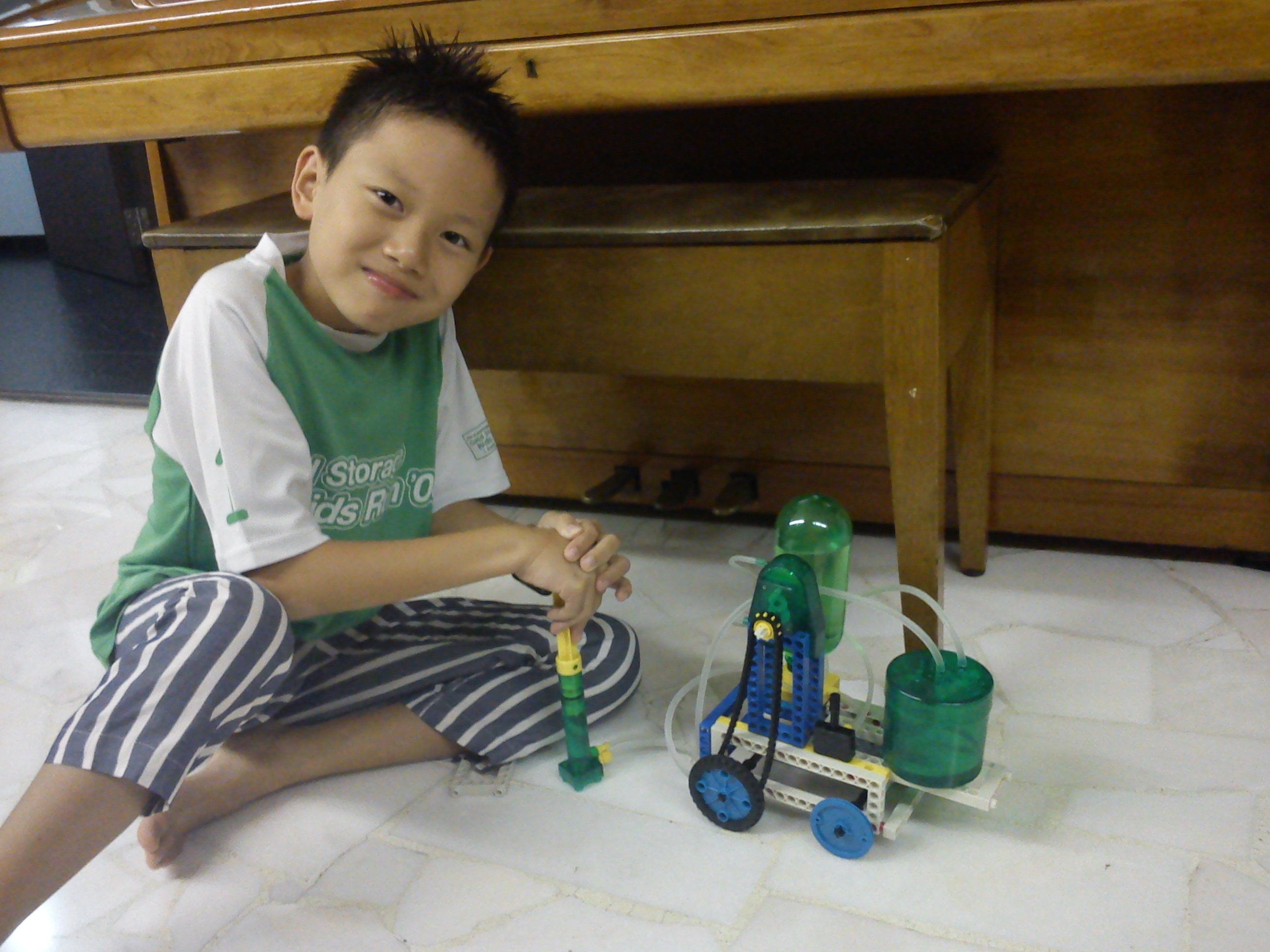What price creativity?
Sometimes I hate going to Popular bookstore. It can be a very stressful experience. Each time I flip through an assessment book, I recall the assessment books the children have at home, which they did not finish. And without fail, each visit to the Popular will have me meet some diligent-looking child with her mother, showing such keen interest in the assessment books, and making such clever remarks (“I have done these before”, “I know already”) that I wonder – are all the kids like that? Are my kids the only ones in the world who are struggling with their studies?
Then I will look at the assessment books and pick something that is comprehensive, yet not too taxing, because I know that my child will probably not be able to finish them anyway. Then I would worry about having such thoughts, wondering how can my child do well in his studies, if he does not have enough practice, and so maybe I should get him more. Then I will think – but there is no point because I don’t think he will be able to finish them. I get caught in the circular thinking and I feel my anxiety level go up.
One thing that comforted me this year when I went to Popular was thinking of my son playing with his water-power vehicle toy. It was a Christmas present from a friend for both Elkan and Elias. But Elkan was not keen on it, whereas Elias loved it and had been playing with it since Boxing day. He builds a new machine each day, and we have gotten used to having water spurt out of the tubes at least once a day.
Elias loves tinkering with things and building things. He accumulates broken pieces and parts of everything and whenever I see any loose items like a piece of wire, or an odd shape ‘thing’, I would ask him if he wants it.
 |
| Elias was really proud of his tower! |
Once he cried and complained that he does not have enough time to create things. “I don’t have enough time, I need time to experiment and build things!”
I felt so bad. Why do we torture our children so? Why do I have to quench his fire, and douse his spirit? What is so harmful about recycling discarded objects, and putting them together to create new things? I stop him only because he needs time to finish his homework, practice his maths and learn his spelling. Are these really more important than letting him dream and create?
I came across an article on creativity which says there are 4 stages in creative thinking:-
1. Saturation: Once the problem or creative challenge has been defined, the next stage of creativity is a left hemisphere activity that paradoxically requires absorbing one’s self in what’s already known. Any creative breakthrough inevitably rests on the shoulders of all that came before it. For a painter, that might mean studying the masters. For me, it involves reading widely and deeply, and then sorting, evaluating, organizing, outlining, and prioritizing.
For Elias, it means playing with the toy, pulling it apart, putting it together in different ways, playing with other toys.
2. Incubation: The second stage of creativity begins when we walk away from a problem, typically because our left hemisphere can’t seem to solve it. Incubation involves mulling over information, often unconsciously. Intense exercise can be a great way to shift into right hemisphere in order to access new ideas and solutions. After writing for 90 minutes, for example, the best thing I can do to jog my brain, is take a run.
Elias goes cycling, tears round the neighbourhood, and plays with other things!
3. Illumination: Ah-ha moments — spontaneous, intuitive, unbidden — characterize the third stage of creativity. Where are you when you get your best ideas? I’m guessing it’s not when you’re sitting at your desk, or consciously trying to think creatively. Rather it’s when you’ve given your left hemisphere a rest, and you’re doing something else, whether it’s exercising, taking a shower, driving or even sleeping.
This explains why Elias, when he is supposed to be doing his work, or going to take his shower, or halfway through his dinner, will suddenly run (or more like sneak) into his room to try to experiment.
4. Verification: In the final stage of creativity, the left hemisphere reasserts its dominance. This stage is about challenging and testing the creative breakthrough you’ve had. Scientists do this in a laboratory. Painters do it on a canvas. Writers do it by translating a vision into words.
Finally, Elias plays with his toys again!
In 1997, the Prime Minister of Singapore launched Thinking Schools, Learning nation. In his speech, he said :-
“What is critical however is that we fire in our students a passion for learning, instead of studying for the sake of getting good grades in their examinations. I must say this passion is generally lacking among our students, including many among our most able. Their knowledge will be fragile, no matter how many ‘A’s they get, unless they have the desire and aptitude to continue discovering new knowledge well after they leave school.
It is the capacity to learn that will define excellence in future, not simply what our young achieve in school. THINKING SCHOOLS must be the crucibles for questioning and searching, within and outside the classroom, to forge this passion for learning among our young.” (emphasis my own)
I am sorry to say that I do not see my child becoming more creative because of school. To give room for his creativity, I have to allow him to do less in his school work.
 |
| Elias’ created this mailbox with strings and a discarded box. He has created many in the past. This is the latest version. |
So that day, in Popular bookstore, I comforted myself by thinking this: A boy who has such passion and perseverance in building a machine won’t do too badly in life, whether he does well in school or not. That’s all that matters, isn’t it? ~ Elisa

